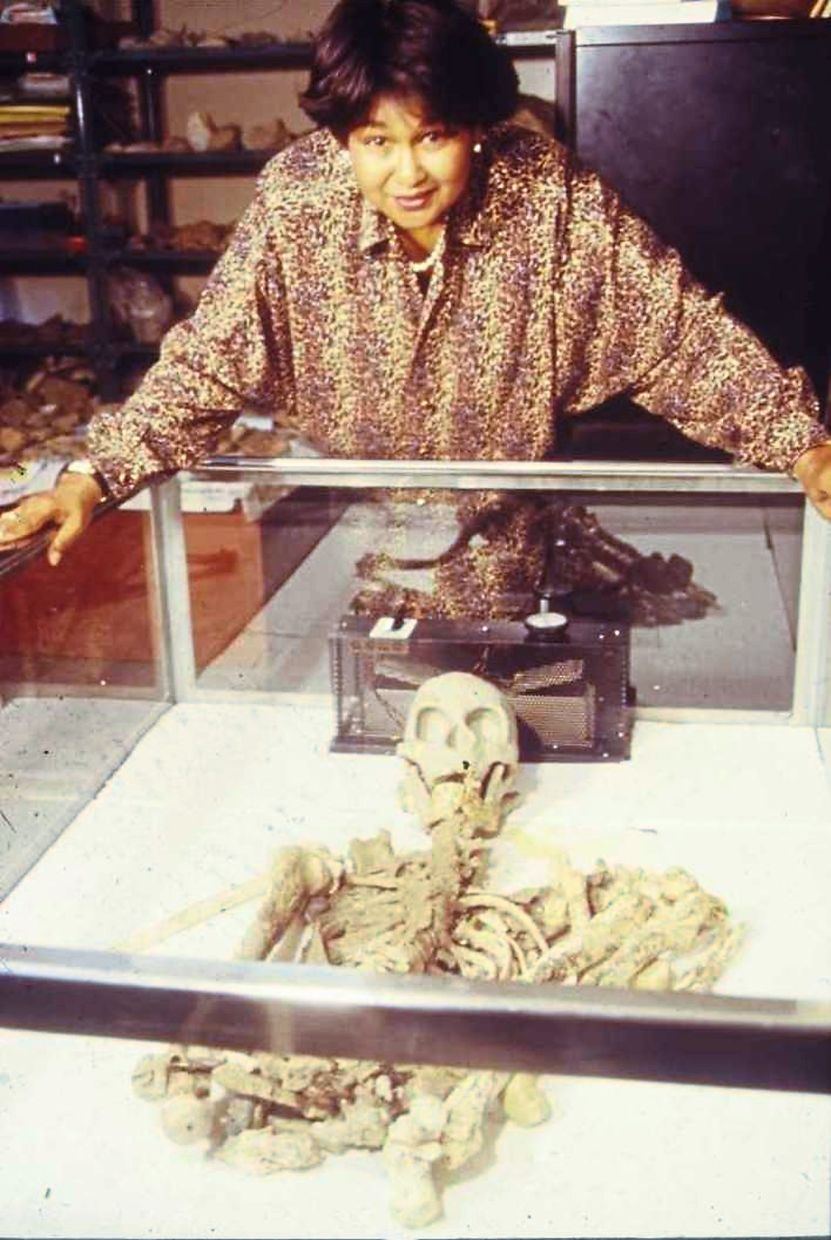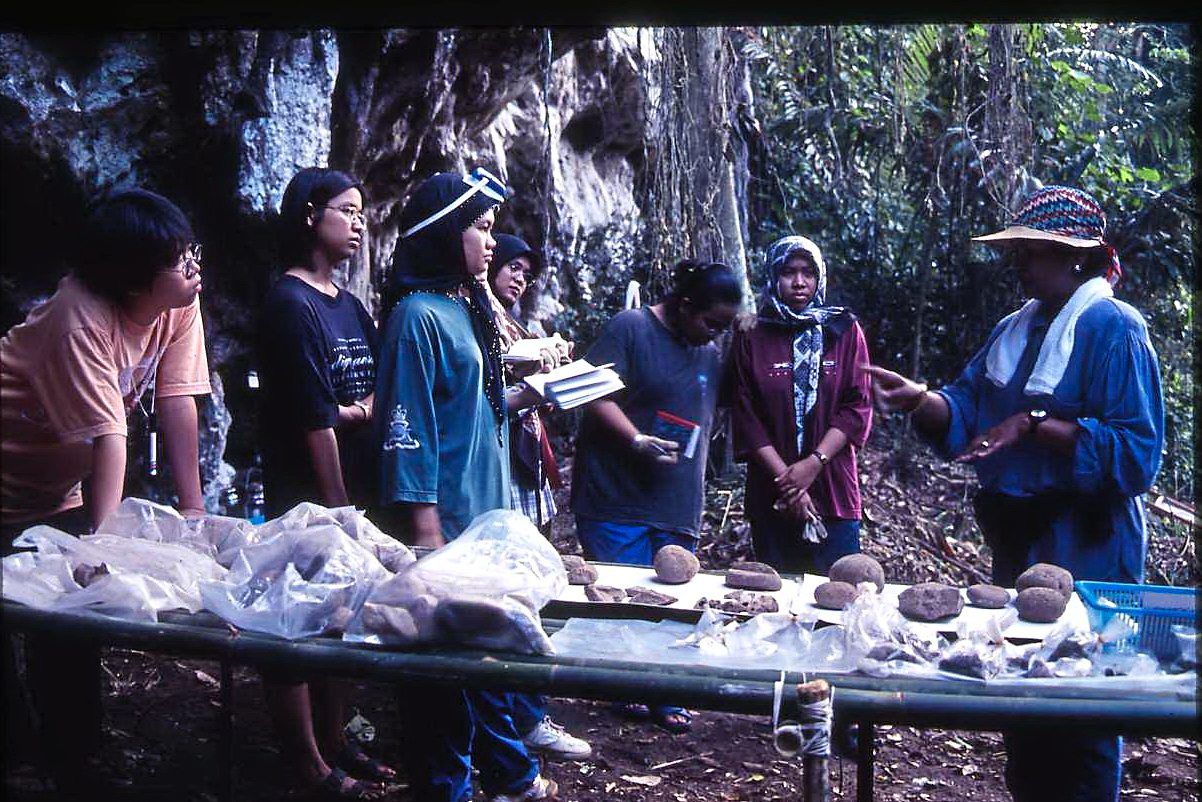ONLINE NEWS: MEET MALAYSIA’S FIRST ARCHAEOLOGIST, WHO DISCOVERED THE 11,000-YEAR-OLD PERAK MAN
https://www.thestar.com.my/lifestyle/family/2022/08/26/going-back-to-the-future
By MING TEOH

She was the archaeologist who, in 1991, discovered the 74,000-year-old Palaeolithic stone tool site in Lenggong, Perak, alongside the world-famous 11,000-year-old Perak Man, which is the oldest human skeleton discovered in Malaysia.
Emeritus Professor Datuk Dr Siti Zuraina Abdul Majid was also responsible for obtaining UNESCO inscriptions for historical Melaka and George Town, Penang, and Batu Bersurat, Terengganu, which meant increasing the prestige of those sites and also raising awareness for its heritage preservation and conservation.
Her discoveries for the past 50 years have graced textbooks in Malaysian schools.
Prof Siti Zuraina, 78, is recognised as an “outstanding historian” and the “first (professionally-trained) Malaysian archaeologist” to develop the field of Malaysian archaeology as well as drive the efforts for Lenggong Valley to be recognised as a Unesco World Heritage site in 2012.
And most recently, she was accorded the Merdeka Award 2022 for Outstanding Scholastic Achievement.

In order to understand and plan our future, it’s important to learn about the past, says Prof Siti Zuraina. It’s the same with archaeology, which is defined as the study of human history and prehistory through site excavations and analysis of artifacts and other physical remains, she says.
“Archaeology is the only tool that provides us with information about our past, and particularly the period without documented history,” says Prof Siti Zuraina.
“Archaeology has contributed in many ways to other sciences,” she says. “For example, faunal (animal) remains reveal the time dimension of extinct species and excavated floral remains tell us about changes in climate and environment; while skeletal remains provide ancient data for medical sciences, like what the Perak Man has done,” she says.
“The Perak Man provides the earliest evidence of the Brachymesophlangia Type A2 congenital deformity, while Niah 1977 (discovery of the oldest anatomically modern human in South-East Asia, in Sarawak’s Niah Cave) was the earliest evidence of the Amelia congenital disorder,” adds the passionate archaeologist. As a result of the Lenggong Valley and Perak Man, she says, we learnt about history, how he lived and died, and the care taken over his burial which revealed more about the society he lived in.
Prof Siti Zuraina was also asked to establish the Department of National Heritage and to protect the country’s archaeological artefacts, she made a policy that requires all lands to be developed to steer clear of any historical artefacts. This move can save valuable local artifacts from disappearing due to land developments in the future.

Hidden mission
Prof Siti Zuraina who was born at the end of Word War 2, says she was brought up in “a very different world ”.
“It was a socially-friendly world which extended from one’s own family to the whole community, and that’s very different from the digital world that we live in today,” she says.
“Growing up in an era which no longer exists in this digital age shaped my values and influenced my interests. It taught me that kindness is important, and education is a priority,” she adds.
When she received a standing ovation for the Lenggong discovery at a conference in France in 1988, it made her realise the significance of the discovery for Malaysia.

“On the global map, Malaysia is an important ‘bridge’ in South-East Asia, and much of it is unexplored. I was the only one in the field at that time and felt the great need to train future archaeologists – her ‘hidden mission’ – so that the work would continue,” she says.
Prof Siti Zuraina adds that besides the challenges of gaining support from the government authorities, university, and grant agencies, she also had to persuade students who at that time had never even heard of the subject and were fearful of making it their bread and butter.
But she gladly acknowledges that her “hidden mission” has been achieved. Since the 1970s, she has been laying the foundation for developing archaeology as a discipline in Malaysia.

Prof Siti Zuraina has successfully advocated for the preservation and conservation of the country’s archaeological heritage. Locally, her findings led USM to establish the Centre for Global Archaeological Research in Penang to train new generations of archaeologists, and the Field Station in Lenggong, Perak. Internationally, she has brought various Malaysian prehistoric findings to the global forefront via Unesco.
Challenges in the field
While she didn’t face any issues as a woman in the field, Prof Siti Zuraina says that “being away from family” was a challenge that many of her team – whether male or female – went through.
“It’s not about being a woman in the field, it’s whether you can face the fieldwork conditions.
“So, follow your passion, focus on your job. If you want to be an archaeologist or any other profession that requires you to be away for weeks on end, and then face long hours in the lab upon your return, you really need to have a good, supportive husband, and organise your family time,” she advises.
“I’m grateful for my family who’ve supported me: my wonderful husband who encouraged me to pursue my goal and delighted in my every success, our young children who were always so curious about my explorations that our dinner-table conversations often inspired new research ideas,” she says.
She recalls that when she first started out, her husband suggested they use their own money to fund site excavations because nobody would support her cause.
Multidisciplinary effort, a strong scientific team and a culture of excellence is necessary because archaeology can be a “destructive process,” says Prof Siti Zuraina.
“You need to be very careful during excavations because every time you take something from the ground, you’re removing its original location, and there’s no going back since the site will be destroyed once done,” she says.
“When discovering something, there’s always the feeling of happiness but it doesn’t last long because the feeling of heavy responsibility takes over,” she says.
“There’s the responsibility to interprete it accurately, correctly, carefully and ethically. It’s not the real picture, but as complete a picture as you can get – a reconstruction from remnants of the past – from data that you collect as you uncover more,” she explains.
“This is why we need to go by levels, and to only give permits to people who know what they’re doing, so that it can be done ethically. “

 Excavation team in Gua Telok Kelawar, Lenggong, in 1989.
Excavation team in Gua Telok Kelawar, Lenggong, in 1989.In 1936, British historians discovered something they regarded as insignificant – man-made tools which they dismissed as stones. But when Prof Siti Zuraina went to look at the sample in the museum, she discover it to be more valuable than initially thought.
“I went to Lenggong to explore further and found man-made stone tools. This discovery was significant because these were the earliest man-made tools found in South East Asia.
“Although people might not be as interested in tools as other artefacts such as ceramics, stone tools are very important since they reveal the culture during the palaeolithic period where the only technology they knew was stone tool technology.
“This could be the first capital of Malaysia – the first settlement and focal point for the local population – at that time. Caves were people’s homes – with ceilings, roofs, windows, doors and floors,” she says.
Prof Siti Zuraina is currently involved in two sites that Malaysia is nominating to Unesco as World Heritage Sites: Forest Research Institute Malaysia (FRIM) and Royal Belum State Park.
Going back to the future






- Created on .
- Hits: 1152
